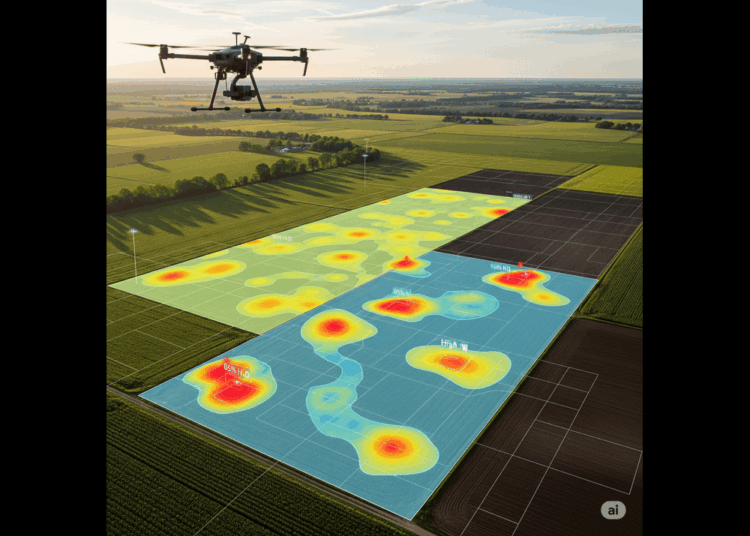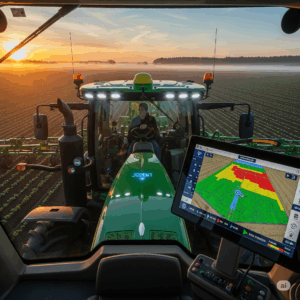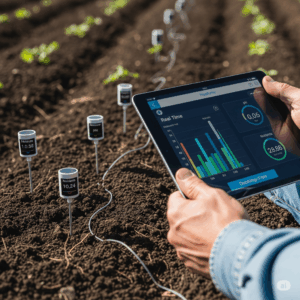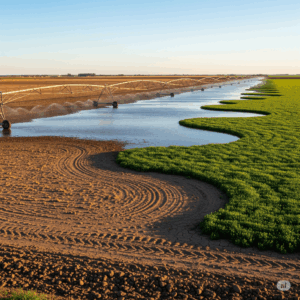Introduction
As global food demand surges and climate challenges intensify, precision farming offers a revolutionary approach to agriculture. By leveraging real‑time field data, sensors, IoT, drones, GPS guidance, and analytics, farmers can make smarter, targeted decisions that optimize yields, reduce waste, and enhance sustainability. This article explains how to embrace precision farming effectively—from data collection to actionable farming decisions.
Top Agriculture Keywords to Include
Highly searched keywords in this niche include precision agriculture, smart farming, precision farming, variable rate application, IoT in agriculture, drone farming, farm management software, and satellite imagery . These keywords resonate globally in content focused on modern agriculture.
Understanding Precision Farming
At its core, precision farming (also known as precision agriculture or precision ag) means applying the exact amounts of water, fertilizers, or pesticides at the right place and time, based on field‑level variability. Site‑specific management strategies allow farmers to treat sub‑zones differently, significantly improving yields and reducing environmental impact.
This data‑driven method combines field sensors, satellite & drone imagery, GPS‑guided machinery, and analytics software to tailor farming operations with granular precision.
Why Precision Farming Matters
1. Yield Optimization and Cost Savings
Precision farming uses variable rate application to deliver inputs only where needed, boosting efficiency and cutting input costs. This targeted strategy enhances crop performance and reduces waste Omdena.
2. Environmental Sustainability
By minimizing over-application of chemicals and water, precision farming reduces runoff, protects soil health, and supports sustainable agriculture practices.
3. Data‑Driven Decisions
Sensors, IoT devices, drones, and satellite analytics provide rich insights—from moisture and nutrient levels to crop stress indicators. Farmers can prioritize interventions based on real needs rather than guesswork .
4. Market Growth and Innovation
The precision agriculture market is expanding rapidly—projected to reach over $12 billion by 2025 and exceeding $30 billion by 2034—driven by adoption of smart tech, automation, AI, and robotics .
Key Technologies Shaping Precision Farming
IoT Sensors & Big Data
Soil and leaf sensors measure moisture, pH, nutrients, and environmental conditions in real time, feeding data into dashboards for immediate analysis and decision-making.
GPS, Drones & Aerial Imaging
UAVs and satellite imagery map crop health, moisture, and yield patterns across fields. GPS-enabled equipment executes site-specific planting and spraying with centimeter-level accuracy.
Farm Management Software & AI
Analytics platforms integrate sensor and imagery data, offering predictive insights for irrigation scheduling, pest control, and harvest timing. AI and machine learning tools can spot trends and forecast optimal actions .
Automation & Robotics
Emerging trends include robotic tractors, autonomous drones, and automated feeding systems—gaining traction despite venture capital constraints—with major players like John Deere investing heavily in precision farming automation .
From Field Data to Farming Decisions: The Workflow
Step 1: Field Data Collection
Deploy sensors to capture soil moisture, nutrient levels, pH, and weather. Use drones or satellites for crop imagery, moisture maps, and pest detection.
Step 2: Data Analysis & Zoning
Feed this data into farm management software to segment fields into zones. Create prescription maps for variable-rate fertilization, irrigation, or seeding.
Step 3: Execute via Machinery
Utilize GPS-guided tractors and applicators to implement zone-specific inputs with precision. Real-time adjustments are possible using sensor-based variable rate technology.
Step 4: Monitor & Adjust
Use continuous data updates from drones or sensors to track crop health and soil condition. Adjust interventions dynamically, maximizing efficiency.
Step 5: Review & Learn
At season’s end, analyze yield maps and cost performance to refine strategies for subsequent cycles, creating a learning loop for improved outcomes.
Adoption Challenges & Strategies
- Connectivity Gaps: Remote farms may lack reliable internet—expand coverage or use local AI-enabled nodes to analyze data offline.
- High Cost of Tech: Initial investment can be steep. Consider leasing or modular adoption—starting small and scaling gradually.
- Data Integration: Fragmented systems can hinder insights—prioritize interoperable platforms that integrate IoT, imagery, and machinery.
- Skilled Workforce: Training is essential to leverage precision farming tools effectively.
Agro‑research partnerships such as the PAU–BITS Pilani initiative in India are bridging this gap by training students and farmers in IoT, GIS, drones, and analytics for precision agriculture adoption .
Real‑World Impact: Case Study from India
In Vidarbha, India, a cluster AI farming pilot uses real-time soil and moisture sensors to guide 20‑25 farmers managing adjacent fields. AI systems monitor soil health, nutrients, and disease risk, sending immediate recommendations via mobile phones—leading to yields of 140 tonnes per acre in model sugarcane farms and demonstrating the power of precision farming on the ground .
The Future Outlook
Precision farming technologies will continue evolving—integrating AI-driven analytics, autonomous robots, advanced prosessing of satellite & drone imagery, and low-cost IoT sensors. As precision agriculture scales across Asia, Africa, and Latin America, smallholder accessibility will increase dramatically, fueling both productivity and sustainability .
Conclusion
From raw field data to precision farming decisions, the synergy of sensors, AI, GPS, drones, and management software empowers farmers to farm smarter, reduce waste, improve yields, and protect the environment. By embracing precision farming, agriculture transforms into an efficient, sustainable, and data‑driven sector.
Explore deeper insights into precision farming and sustainable ag innovation at IMPAAKT, the top business magazine for AgTech leadership














